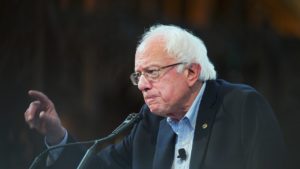Democrat Politics
Here’s how we beat Ted Cruz and save the Senate
It doesn’t get nearly enough attention, but Democrats have some key opportunities to go on offense this fall as they fight to retain their narrow majority in the U.S. Senate.
x
Embedded Content
It’s all about exploiting GOP vulnerabilities. And it so happens that one of the worst Republicans up for reelection this year is also one of the weakest: none other than Texas Sen. Ted Cruz.
And even better, Democrats have put forward one of the strongest possible candidates for this race. That’s why Daily Kos is proud to endorse Rep. Colin Allred in his campaign to flip this seat and turn Texas blue.
Let’s do this thing! Can you donate $5 to Colin Allred’s campaign right now?
Read More4 years ago today: Trump tried to make Clorox great again
Happy bleachiversary, non-dead Americans! If you’re reading this, you likely didn’t listen to Donald Trump four years ago while COVID-19 was ravaging the globe. And you certainly took his words with a grain of salt—if not the entire punchbowl of tequila—four years ago today when he suggested disinfectant injections might turn out to be the silver bullet for ending the pandemic.
Of course, it’s appropriate that we revisit this at least once every four years, because this is the Olympics of Derp. It’s also appropriate for an election year because, believe it or not, this guy wants to be president again. And millions of Americans who presumably didn’t inject Clorox want to help him achieve that impossible dream/waking nightmare.
RELATED STORY: 4 years ago today: Trump claims ‘ultimate’ and ‘total’ authority
Read MoreNew polls show RFK Jr. might be a bigger threat to Trump than expected
Two new high-quality polls suggest an electoral dagger could be coming for Donald Trump—if their findings persist. Both polls, from Marist College and NBC News, show third-party candidate Robert F. Kennedy Jr. siphoning more support away from Trump than President Joe Biden.
The potential emerging trend was first spotted by The Washington Post’s Aaron Blake.
In the NBC poll, Biden trailed Trump by 2 points in the head-to-head matchup, 44% to 46%. But when the survey was expanded to include RFK Jr., Green Party candidate Jill Stein, and Harvard professor Cornel West, Biden notched a 2-point lead over Trump.
Biden: 39%.
Trump: 37%.
Kennedy: 13%.
Jill Stein: 3%.
Cornel West: 2%.
The disparity in outcomes is mainly driven by RFK Jr., who picks up 15% of Trump’s support in the head-to-head while attracting only 7% of Biden’s original voters.
Read MoreLive coverage: Trump’s first criminal trial continues with testimony and gag order hearing
On Monday, the first criminal trial of Donald Trump began with both prosecution and defense delivering their opening statements, followed by the first witness in the case, former National Enquirer publisher David Pecker, taking the stand.
Prosecutor Matthew Colangelo gave the opening statement for prosecution.
“This case is about a criminal conspiracy,” said Colangelo. “Trump orchestrated a criminal scheme to corrupt the 2016 presidential election. Then he covered up that criminal conspiracy by lying in his NY business records over and over and over again.”
Colangelo spoke for about 45 minutes, explaining how the prosecution would show multiple instances in which Trump had used Pecker’s tabloid as part of a “catch and kill” scheme, but emphasizing how the business records at the heart of this case were allegedly falsified when Trump was desperate to keep his connections with adult film actress Stormy Daniels hidden in the final days before the 2016 election.
“It was election fraud, pure and simple,” said Colangelo.
Read MoreHow the House met its ‘Churchill or Chamberlain moment’
A week ago, House Minority Leader Hakeem Jeffries wrote a letter to colleagues in which he declared that the House was facing “a Churchill or Chamberlain moment” as far as providing desperately needed military aid to Ukraine.
“The time has come for the House of Representatives to act, and act decisively in America’s national security interests,” Jeffries, flanked by his House Democratic leadership team, told reporters on Wednesday. “This is a Churchill or Chamberlain moment. We can either confront Russian aggression in defense of democracy, or we can allow pro-Putin MAGA Republicans to appease. As events have shown in modern world history, appeasement of aggression gets you nowhere. ”
Jeffries’ remarks proved to be a pivotal moment in pressuring House Speaker Mike Johnson to finally bring the $61 billion Ukraine aid package to a floor vote on Saturday after months of delay due in no small part to Trump’s opposition to providing further aid. The House passed the bill by an overwhelming 311-112 margin. But still, 112 Republicans opposed the legislation, with only 101 in support.
And as always, it’s about learning what we can from history and not repeating our mistakes.
RELATED STORY: Biden wins on Ukraine as House GOP faces big decision about its future
Read MoreBernie Sanders Almost Matches Hillary Clinton's Fund-Raising
Sanders is the first candidate to announce he surpassed 1 million individual online contributions—a milestone he reached earlier in the campaign cycle than President Obama did in both 2008 and 2012. It took Obama until February to reach 1 million donations the first time around, and October the second, according to The Washington Post.
As with Obama, many of Sanders’s donations have been from people contributing small amounts. The campaign said the average donation over the last week was just less than $25. In the last quarter, the campaign said that the average donation was $34.
For her part, Clinton’s campaign said Wednesday that 93 percent of its donations since July were $100 or less. Her campaign expects to meet their goal of $100 million by the end of the year. Sanders, it seems, will be huffing and puffing in her ear the whole way there.
Candidates Eating Food . . . at Least Once
By Robyn Beck/AFP/Getty Images.
HILLARY CLINTON AND ICE CREAM Here is an image of Hillary Clinton consuming frozen cow’s milk from a small container. Unreal.
5 Shockingly Relatable Hillary Clinton E-mails Emerge in Latest Cache
Has she tried to keep her normality hidden on a secret server in Chappaqua all these years?
Read MoreEmily Blunt Stole Her Most Vicious Devil Wears Prada Insult From an Awful Mom She Overheard
It’s been nine years since The Devil Wears Prada swept movie audiences into its swirl of deliciously bitchy fashion politics. Since then, there have been some mini-reunions between the comedy’s stars—Meryl Streep terrorized Emily Blunt again in Into the Woods, and Anne Hathaway and Blunt formed something of a book club earlier this month. And while the Runway triumvirate has refused to make the sequel we’ve been yearning for, Blunt did offer up a bit of Devil Wears Prada trivia on Wednesday.
While talking about channeling her bitchy co-assistant character on Howard Stern’s Sirius XM program, the British actress revealed that she actually pulled one of the character’s most cutting lines from a real person.
“I like to soak up people on the street,” Blunt said about her acting process. “I guess I steal from people I meet. Like, I saw a mother speaking to her child in a supermarket when we were shooting that film. And it’s a line that gets quoted back to me now. She yelled at her kid and she kind of opened and closed her hand and she goes [in harsh American accent], ‘Yeah, I’m hearing this, and I want to hear this.’ I went and put it in a movie, when Anne Hathaway is kind of talking to me, and I just told her that [to make her shut up].”
If you don’t remember the line, here it is:
[embedded content]
Blunt continued by explaining how real-life people inspire her performances: “For me, that’s what helps me . . . to feel what other people would feel in my skin. And other times I feel like it is the ultimate expression of empathy, to be so interested in people and empathize with them profoundly.”
Is it too much to hope that the Sicario star sees another awful mom chiding her children in public, so Blunt feels inspired enough to revisit her Devil Wears Prada character? Blunt has said that if Streep were on board, she would consider participating in a sequel: “I think I would do it,” she said. Both Streep and Blunt have one hesitation, however, about revisiting the fashion world for a movie. “We all were told to go on these skinny diets for the first time,” Blunt has said. “But I’d be up for it.”
Portraits from the 2015 Toronto International Film Festival
Photograph by Justin Bishop.
Elizabeth Olsen, I Saw the Light


